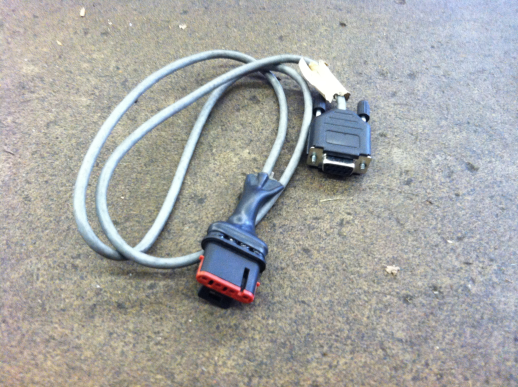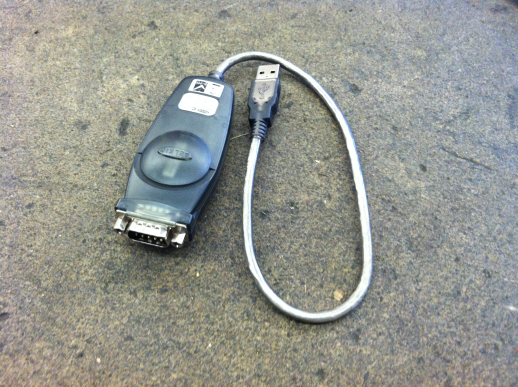There have been several revisions to the program running in the Think Power Conversion Unit (PCU). Most of these changes fixed bugs or accommodated the retrofit to a PTC heater. In this post I might throw around various terms that all essentially mean the same thing: firmware/software, release/version, update/flash/re-flash.
The latest firmware release changed the driving characteristics of the car quite significantly. The top speed in Drive is higher and the acceleration is greater. I’m not sure how different Economy mode is compared to previous releases, but the difference between Drive and Economy in this latest release is much more dramatic than previous versions. Unfortunately, there is no specific, definitive way of knowing what version is installed on your PCU without connecting a computer with specific software through a specific cable. I’ve had the opportunity to feel the difference on several occasions so I can now tell within a few seconds of mashing the accelerator to the floor whether or not the car is up to date. If you aren’t sure if your car is up to date the best way to get a best guess is to test your top speed on the freeway. If your Think gets up to 75mph indicated on the instrument panel (which is actually only about 70mph) on a reasonably flat grade you’re probably up to date. If your car takes a long time to get up to 70mph indicated and not much more, then you should seriously consider getting this re-flash performed. Many customers feel much safer getting on the freeway and going up hills on the freeway with the extra power.
Think headquarters did not do a spectacularly thorough job of making sure all customers were notified of or received this latest re-flash. The actual labor to perform the re-flash is minimal– probably about 5 minutes and most of that time is just waiting. But of course it does require certain software and hardware.
The required hardware is called (at least by Think technicians) a SIADAS cable. Many people have told me that the connector on one end is a GM-style connector. I don’t work on my GMs, so I really don’t know. The other end is a serial connector for which few modern laptops are likely to have a mating port. So the SIADIS cable is frequently connected to a generic serial-USB adapter.


The required software is called C167_Loader.exe, and the latest firmware release is a file named GEN2A_069_007_00P_ABS_PTC_37KW.hex.
I believe that the executable file is stand-alone and doesn’t require any complicated installation or special permissions, but the serial-USB adapter will probably require some configuration changes.
If your laptop has a serial port and you don’t require a serial-USB adapter, make sure that the serial port is configured as COM1.
Most laptops will probably not have a serial port, so the serial-USB adapter will be required. Plug the USB into your laptop and allow the drivers to load; this could take quite awhile. Eventually you will probably get a message in the lower right corner taskbar that indicates the device is installed and ready to use. Open the Device Manager; in Windows 7 you can access this through the Control Panel. Find the adapter under Universal Serial Bus controllers, right click on it and select Properties. Search through the tabs (I think it will be on the Advanced one) until you find the option to change the port to COM1.
If you start C167_Loader.exe and an error message indicates “Incorrectly Detecting Characters on RS232 Comm Link” then you do not have the hardware configured correctly, and you may need to seek IT support.
Once you have the hardware configured the PCU firmware update procedure is quite simple:
- Start by verifying that the car is completely off. The key can be either removed from the “ignition” lock cylinder or in the off/lock position. Your car cannot be connected to an EVSE during the reflash. The car will need to be turned on for a few minutes without being started, and any reasonably healthy 12V battery should be more than capable of maintaining sufficient voltage, but it’s probably a good idea to not turn on the headlights, blower or any other 12V loads while reflashing.
- Connect the SIADIS cable to the mating connector under the passenger-side dash.
- Start the C167_Loader program.
- Click on the Select button in the upper left corner of the program window, and navigate to the file GEN2A_069_007_00P_ABS_PTC_37KW.hex and select it.
- Turn the key to the on position– no need to turn it all the way to the start position. The contactors will not close like you normally expect them to, but this is normal. Lights flashing on the dash are also normal– I think the Power Limit and TPMS lights flash in unison. You can watch the progress of the re-flash in the C167-Loader window. It should only take a few minutes to complete. Please don’t disturb the car at all during this time.
- When the program indicates that the re-flash was successful turn the car off, disconnect the SIADIS cable from the car and close C167-Loader.
- Turn the car on and give it a test drive!